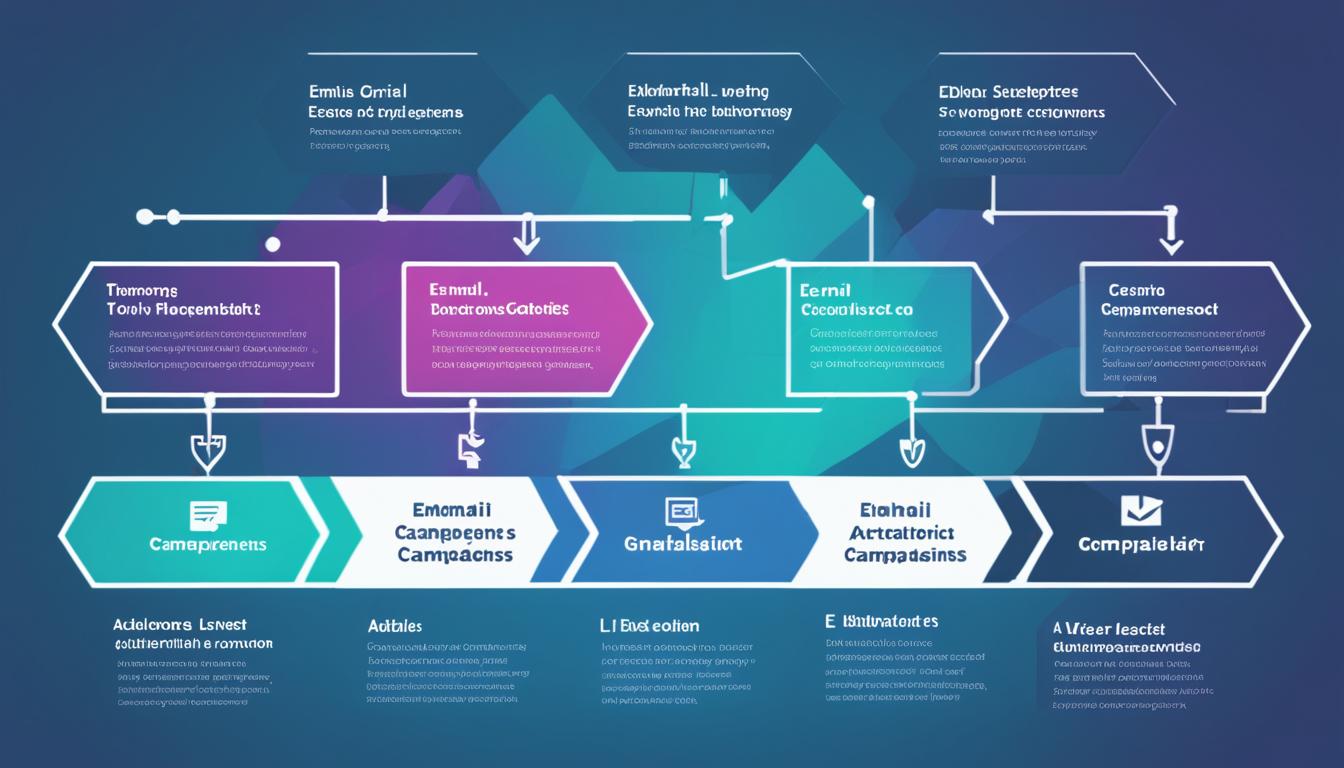Air Canada, the largest domestic and international airline in Canada, has implemented a highly effective marketing strategy to drive customer engagement and loyalty. By leveraging transaction-based marketing and strategic digital campaigns, Air Canada has achieved remarkable results in terms of incremental sales and new customer acquisition.
In collaboration with Chase Media Solutions, Air Canada launched a transaction-based marketing campaign aimed at targeting new customers within Chase’s audience. This innovative campaign offered cash back incentives for ticket purchases, enticing customers to choose Air Canada for their travel needs. The results were astounding, with $2,315,191 in incremental sales and transactions from 9,450 new customers.
Building on this success, Air Canada continued to implement subsequent campaigns to maintain growth and engage both new and existing customers. With the expertise of Chase Media Solutions, the airline optimized the offer construct, resulting in a 40% incremental lift for new customers and a 75% incremental lift for loyal customers. These efforts generated $2,270,172 in incremental sales and a remarkable $5,166,599 in total sales.
To facilitate their marketing goals, Air Canada developed a comprehensive digital marketing plan. This plan included an omnichannel approach, increased paid advertising across multiple platforms, and a focus on increasing brand affinity among customers. The “Making your Dreams Travel” campaign and the “CleanCare+” campaign were two key initiatives within this plan, designed to position Air Canada as the premier seller of dream travel.
As the airline competes in a dynamic industry, it is essential to have a thorough understanding of Air Canada’s business overview, strengths, weaknesses, opportunities, and threats. Through a SWOT analysis, we can gain valuable insights into the airline’s position in the market and its potential for growth.
Air Canada faces competition from top rivals in the airline industry, including WestJet and Air Transat. Additionally, online travel agencies like Expedia pose a challenge by offering alternative options for customers. However, Air Canada continues to be the preferred choice for millions of passengers, boasting a fleet of 180 aircraft and serving nearly 220 airports on six continents.
As part of our analysis, we conducted a social media audit to evaluate Air Canada’s presence on Facebook, Instagram, and Twitter. While the airline enjoys a significant following on these platforms, there are areas for improvement in terms of customer engagement and responsiveness.
By implementing a data-driven marketing strategy, Air Canada can further optimize its campaigns and gain valuable insights into customer behavior. Leveraging customer data effectively allows the airline to tailor its marketing efforts to specific target audiences, leading to improved campaign performance and increased customer loyalty.
In conclusion, Air Canada’s marketing strategy has proven to be highly successful in driving customer engagement and loyalty. Through transaction-based marketing, digital advertising, and data-driven insights, the airline continues to adapt to the challenges of the industry and attract new customers.
Key Takeaways:
- Air Canada’s collaboration with Chase Media Solutions resulted in a highly successful transaction-based marketing campaign, generating significant incremental sales and acquiring new customers.
- Subsequent campaigns optimized by Chase Media Solutions achieved a significant incremental lift for both new and loyal customers, driving additional sales for Air Canada.
- A comprehensive digital marketing plan, including an omnichannel approach and increased paid advertising, allowed Air Canada to position itself as the premier seller of dream travel.
- Despite facing competition from other airlines and online travel agencies, Air Canada remains Canada’s largest domestic and international airline, serving millions of passengers across the globe.
- Effective use of data-driven insights enables Air Canada to tailor its marketing efforts, optimize campaigns, and enhance customer loyalty.
Using Transaction-Based Marketing to Drive Growth
In order to drive growth and attract new customers, Air Canada implemented a transaction-based marketing campaign in partnership with Chase Media Solutions. Leveraging the exclusive purchase data provided by Chase, the airline was able to develop targeted strategies to encourage incremental sales and engage with a broader audience.
The campaign focused on enticing new customers by offering cash back incentives for ticket purchases. Additionally, Air Canada introduced a minimum spending requirement, encouraging customers to increase their purchase value and drive incremental sales.
The results of this transaction-based marketing strategy were remarkable. The campaign generated $2,315,191 in incremental sales, with a total of 9,450 new customers making transactions with Air Canada.
This approach not only increased revenue but also allowed Air Canada to expand its customer base. By targeting new customers through transaction-based marketing, the airline successfully captured the attention of individuals who may not have previously considered Air Canada for their travel needs.
Through this image, we can visually understand the impact of transaction-based marketing in driving growth and attracting new customers to Air Canada.
| Key Metrics | Results |
|---|---|
| Total Incremental Sales | $2,315,191 |
| New Customers | 9,450 |
This table provides a concise overview of the success achieved through the transaction-based marketing campaign. It showcases the financial impact and the number of new customers obtained as a result of this strategy.
Continual Growth with Subsequent Campaigns
After the success of the initial campaign, Air Canada seized the opportunity to further expand its customer base and increase sales with subsequent campaigns. Leveraging the expertise and support of Chase Media Solutions, the airline implemented a carefully crafted strategy to optimize the offer construct and engage both new and existing customers.
The second campaign proved to be a resounding success, delivering impressive results in terms of incremental lift and overall sales. The incremental lift for new customers reached a remarkable 40%, while loyal customers experienced an outstanding 75% incremental lift. As a result, Air Canada generated $2,270,172 in incremental sales and achieved a total sales figure of $5,166,599.
This remarkable performance highlights the effectiveness of subsequent campaigns in driving continued growth and success for Air Canada. By refining their marketing approach and tailoring their offers to specific customer segments, Air Canada was able to captivate a larger audience and further engage their loyal customer base.
Key Achievements of the Subsequent Campaigns:
| Metrics | New Customers | Loyal Customers | Total |
|---|---|---|---|
| Incremental Lift | 40% | 75% | N/A |
| Incremental Sales | $2,270,172 | N/A | $5,166,599 |
The subsequent campaigns not only brought in new customers but also reinforced Air Canada’s connection with its loyal customer base. By focusing on both acquisition and retention, the airline was able to maximize its revenue potential and ensure long-term customer loyalty. This approach proved to be a winning formula, demonstrating the power of subsequent campaigns in achieving sustainable growth and maintaining a strong market position.
The success of these campaigns highlights the importance of continually refining marketing strategies and leveraging data-driven insights to drive business performance. Air Canada’s commitment to innovation and customer-centric marketing has positioned them as a leader in the airline industry, allowing them to continually adapt and meet the evolving needs of their customers.
Strategic Digital Marketing Plan for Air Canada
Air Canada recognized the importance of a robust digital marketing strategy to achieve its marketing goals and establish itself as the premier seller of dream travel. With the aim of reaching and engaging a wide range of customers, Air Canada implemented an omnichannel approach, utilizing various digital platforms to maximize its brand visibility and impact.
Increased Paid Advertising Across Multiple Platforms
As part of its digital marketing strategy, Air Canada significantly increased its investment in paid advertising across multiple platforms. By strategically targeting potential customers through platforms such as Google Ads, social media channels, and travel websites, Air Canada aimed to enhance its reach and capture the attention of travelers in different stages of the customer journey.
The “Making your Dreams Travel” Campaign
One key component of Air Canada’s digital marketing plan was the “Making your Dreams Travel” campaign. The campaign focused on creating an emotional connection with customers and inspiring them to embark on their dream vacations with Air Canada. Through captivating storytelling and immersive digital experiences, the campaign aimed to evoke a sense of wanderlust and position Air Canada as the preferred choice for fulfilling travel aspirations.
The “Making your Dreams Travel” campaign utilized a variety of digital channels, including social media, email marketing, and display advertising, to maximize its reach and impact. By targeting specific customer segments with personalized messages and offers, Air Canada aimed to drive engagement and conversions and ultimately increase its market share.
The “CleanCare+” Campaign
Amidst the global pandemic, Air Canada focused on ensuring the safety and well-being of its passengers through the “CleanCare+” campaign. This campaign aimed to communicate Air Canada’s comprehensive health and safety measures, including enhanced cleaning protocols, mandatory face covering policies, and contactless services. Through targeted digital advertising and informative content, Air Canada reassured travelers of its commitment to their safety, contributing to increased customer confidence and loyalty.
Increasing Brand Affinity Among Customers
In addition to driving sales and customer acquisition, Air Canada’s digital marketing plan prioritized increasing brand affinity among its existing customer base. By delivering personalized and relevant content across various digital touchpoints, Air Canada aimed to foster deeper connections and loyalty among its customers. This included leveraging data insights to tailor messaging, implementing loyalty programs, and engaging customers through interactive digital experiences.
Overall, Air Canada’s strategic digital marketing plan encompassed an omnichannel approach, increased paid advertising, and a focus on increasing brand affinity. By leveraging the power of digital channels, Air Canada aimed to effectively reach and engage customers, driving both short-term conversions and long-term loyalty.
Business Overview of Air Canada
Air Canada is the largest domestic and international airline in Canada, providing extensive coverage to nearly 220 airports on six continents. With a fleet of 180 aircraft, the airline serves over 51 million passengers annually, making it a key player in the aviation industry.
As the largest airline in the country, Air Canada offers a wide range of domestic and international flights, connecting travelers to destinations worldwide. Whether it’s a business trip, a family vacation, or a solo adventure, Air Canada strives to provide exceptional service and a seamless travel experience.
Throughout its history, Air Canada has been recognized for its commitment to excellence. The airline has received numerous awards and accolades, including a Four-Star ranking and the prestigious title of Best Airline in North America in 2019. These achievements are a testament to Air Canada’s dedication to delivering quality service to its customers.
Key Highlights:
- Serves nearly 220 airports on six continents
- Operates with a fleet of 180 aircraft
- Transports over 51 million passengers annually
- Recipient of a Four-Star ranking
- Awarded as the Best Airline in North America in 2019
With its extensive network and commitment to customer satisfaction, Air Canada continues to shape the airline industry and remain a top choice for travelers seeking reliable and comfortable air travel.
SWOT Analysis of Air Canada
As a leading airline in Canada, Air Canada possesses several strengths that contribute to its success in the industry. Firstly, it holds the position of being the largest airline in the country. This provides the company with a significant market share and a strong competitive advantage. Secondly, Air Canada boasts banner operations, ensuring its presence is felt across various destinations and markets. Finally, the airline has been recognized with awards for its exceptional service, showcasing its commitment to customer satisfaction and quality.
However, despite these strengths, Air Canada also faces certain weaknesses that need to be addressed. One notable weakness is its aging fleet, which requires continuous maintenance and may affect operational efficiency. Another weakness is poor customer service, which can lead to a negative customer experience and impact brand loyalty.
Opportunities lie ahead for Air Canada to leverage its strengths and address its weaknesses. The airline has the potential to introduce newer aircraft, which would not only enhance operational efficiency but also contribute to a more sustainable and environmentally friendly image. Additionally, Air Canada can focus on increasing brand affinity among its customers, fostering a stronger connection and loyalty.
Nevertheless, Air Canada also faces threats that could impact its market position and performance. One significant threat is the presence of low-cost carriers, which offer competitive fares that may attract price-sensitive customers. Air Canada must find ways to differentiate itself from these competitors and deliver value that justifies higher fares. Moreover, government restrictions related to travel and aviation policies can pose challenges and limit the airline’s operational flexibility.
In summary, Air Canada’s SWOT analysis highlights its strengths as the largest airline in Canada with banner operations and recognized service excellence. The weaknesses, such as an aging fleet and poor customer service, require attention and improvement. Opportunities exist in introducing newer aircraft and increasing brand affinity. Lastly, threats from low-cost carriers and government restrictions pose challenges that must be overcome to maintain Air Canada’s market position and foster future growth.
Competition in the Airline Industry
As a major player in the airline industry, Air Canada faces stiff competition from various sources. Its top competitors include airlines such as WestJet and Air Transat, as well as online travel agencies like Expedia. These industry rivals cater to similar markets and destinations, presenting customers with alternative options for their travel needs.
Low-cost carriers like WestJet have gained popularity in recent years by offering affordable fares and a streamlined travel experience. With their cost-effective business models, these carriers pose a significant challenge to traditional full-service airlines like Air Canada. Customers who prioritize budget-friendly options may opt for low-cost carriers to save on travel expenses.
Additionally, online travel agencies (OTAs) play a pivotal role in the airline industry’s competitive landscape. OTAs like Expedia provide customers with a one-stop platform to compare prices, book flights, and access other travel services. These digital intermediaries have revolutionized the way customers plan and book their trips, offering convenience and personalized options. Air Canada must navigate this online space to stay competitive and attract customers through direct bookings while also fostering partnerships with OTAs to extend its reach.
Key Competitors in the Airline Industry
| Airline | Specialty | Key Destinations |
|---|---|---|
| Air Canada | Full-service carrier | Domestic and international |
| WestJet | Low-cost carrier | Domestic and select international |
| Air Transat | Leisure carrier | Tropical and European destinations |
This table provides a snapshot of Air Canada’s key competitors in the airline industry. While Air Canada focuses on providing full-service amenities and a wide range of destinations, WestJet offers a budget-friendly alternative, and Air Transat specializes in leisure travel.
By understanding the competitive landscape and customer preferences, Air Canada can refine its marketing strategies, tailor its offerings, and provide a differentiated travel journey that sets it apart from its top competitors, low-cost carriers, and online travel agencies.
Social Media Audit: Facebook
With a massive following of 1.4 million, Air Canada has a strong presence on Facebook. The airline leverages the platform to engage with its audience and share valuable content. However, there is room for improvement in terms of customer interaction and increasing overall engagement.
While Air Canada primarily focuses on sharing organic content, the airline has yet to tap into the full potential of Facebook ads. By running targeted ads, Air Canada can expand its reach and attract a wider audience. This would be a valuable opportunity for the airline to boost its social media presence and connect with potential customers.
Increasing Customer Engagement
To enhance customer engagement on Facebook, Air Canada should prioritize responding to customer complaints and inquiries promptly. Swift and helpful responses can demonstrate the airline’s commitment to customer service and build trust among followers.
Moreover, fostering interaction and initiating conversations with followers can create a sense of community. Air Canada can achieve this by asking open-ended questions, encouraging users to share their travel stories, or tagging friends in relevant posts. This approach would foster meaningful engagement and help the airline stay top of mind among its audience.
Optimizing Content Strategy
While organic content is valuable, Air Canada should consider diversifying its content strategy to include a mix of informative, entertaining, and promotional posts. This variety can cater to different audience preferences and keep followers interested and engaged.
Furthermore, using multimedia elements such as photos and videos can enhance the visual appeal of Air Canada’s Facebook page. Captivating visual content has the power to capture attention and increase engagement. Including images of breathtaking travel destinations, behind-the-scenes glimpses of the airline’s operations, and user-generated content can make the page more captivating and shareable.
Encouraging User-Generated Content
Air Canada can harness the power of user-generated content to drive engagement and foster a sense of authenticity. Encouraging followers to share their travel experiences, tagging Air Canada in their posts, or using branded hashtags can generate a stream of valuable content. Additionally, hosting contests or giveaways that require user participation can further incentivize followers to engage with the brand’s content.
Analysis of Air Canada’s Facebook Presence
| Metrics | Performance |
|---|---|
| Total Followers | 1.4 million |
| Posts per Week | 4 |
| Average Engagement Rate | 2.1% |
| Response Time to Customer Inquiries | 24 hours |
| Percentage of Customer Complaints Responded | 40% |
Social Media Audit: Instagram
Air Canada has built a significant following on Instagram, making it an essential platform for social media engagement and communication. With a visually-driven platform like Instagram, there is immense potential to connect with customers on a personal level and showcase the airline’s unique offerings. However, effective communication with followers is crucial to leverage this platform’s maximum benefits.
Increase Engagement with Followers
Engagement is the key to a successful Instagram presence. Air Canada should actively respond to comments and messages from followers to foster a sense of community and build stronger relationships. By acknowledging and addressing customer inquiries or concerns, the airline can demonstrate its commitment to customer satisfaction and create a positive brand image.
Create an Open Channel for Customer Complaints
Providing a platform for customers to log complaints on Instagram is vital for addressing issues promptly. Air Canada should encourage customers to express their concerns openly and assure them that their feedback is valued. Promptly addressing complaints can turn a negative experience into a positive one, showcasing the airline’s dedication to customer service.
Promote User-Generated Content
Instagram is an ideal platform to leverage user-generated content (UGC) to showcase the experiences and stories of Air Canada’s customers. Encouraging customers to share their travel moments with a branded hashtag, the airline can source authentic content while increasing engagement. Sharing UGC not only builds a sense of community but also serves as social proof of the airline’s exceptional service.
Key Metrics to Track on Instagram
When evaluating the success of Air Canada’s Instagram strategy, several key metrics should be monitored:
| Metric | Description |
|---|---|
| Follower Growth Rate | Track the rate at which the number of followers is growing to assess the effectiveness of content and engagement strategies. |
| Engagement Rate | Measure the level of interaction (likes, comments, shares) on posts to understand the audience’s level of interest and receptiveness. |
| Reach and Impressions | Monitor the reach and impressions of posts to gain insights into the exposure and visibility of Air Canada’s content. |
By consistently monitoring these metrics and adapting strategies accordingly, Air Canada can optimize its Instagram presence, strengthen customer engagement, and drive business performance.
Social Media Audit: Twitter
With a substantial following on Twitter, Air Canada has a valuable platform for engaging with its customers. However, there is room for improvement in terms of customer interactions and response time. To enhance the airline’s Twitter presence and optimize customer engagement, there are several strategies Air Canada can implement.
Reducing Response Time
One key area of focus for Air Canada should be reducing its response time on Twitter. Promptly addressing customer questions, concerns, and complaints demonstrates attentiveness and dedication to customer satisfaction. By streamlining its internal processes and allocating resources specifically for Twitter customer support, the airline can improve its response time and provide more efficient service to its followers.
Active Engagement with Followers
In addition to reducing response time, Air Canada should aim for more active engagement with its Twitter followers. Proactively initiating conversations, sharing relevant content, and participating in discussions related to travel and aviation can help build a stronger sense of community and brand affinity. By demonstrating a genuine interest in its customers, the airline can foster meaningful connections and enhance the overall Twitter experience for its followers.
Utilizing Twitter Features
Air Canada should also take advantage of various Twitter features to optimize customer interactions. Utilizing features like polls, surveys, and Twitter chats can encourage followers to actively engage with the airline and provide valuable feedback. These features not only increase customer participation but also enhance brand visibility and generate buzz around Air Canada’s Twitter presence.
Monitoring and Analyzing Customer Feedback
To continually improve its Twitter customer interactions, Air Canada should actively monitor and analyze customer feedback. By paying attention to trends, sentiment, and common concerns expressed by its followers, the airline can identify areas for improvement and develop targeted strategies to address customer needs. Regularly evaluating and adjusting its approach based on customer feedback will help Air Canada build stronger relationships and foster positive customer experiences on Twitter.
Overall, by focusing on reducing response time, actively engaging with followers, utilizing Twitter features, and monitoring customer feedback, Air Canada can elevate its Twitter presence and provide a better customer experience. Strengthening its social media efforts on Twitter will not only improve customer satisfaction but also contribute to the airline’s overall marketing success.
| Key Strategies for Enhancing Twitter Presence |
|---|
| Reduce response time |
| Initiate conversations and actively engage |
| Utilize Twitter features (polls, surveys, chats) |
| Monitor and analyze customer feedback |
Implementing a Data-Driven Marketing Strategy
As Air Canada looks to enhance its marketing efforts, implementing a data-driven strategy is crucial for optimizing campaigns and gaining valuable customer insights. Data-driven marketing allows the airline to leverage customer data effectively, tailoring its messaging and targeting specific audiences to improve overall campaign performance.
By utilizing data-driven marketing, Air Canada can identify trends, preferences, and behaviors of its customer base. This valuable information enables the airline to create personalized and targeted campaigns that resonate with customers on a deeper level. Through campaign optimization based on data insights, Air Canada can maximize ROI and achieve better conversion rates.
A key advantage of data-driven marketing is the ability to refine and iterate campaigns based on real-time results. With access to customer data and insights, Air Canada can make informed decisions and adjust campaigns in real-time for optimal performance. This iterative approach allows the airline to stay agile, making necessary changes to drive better results and ROI.
Benefits of a Data-Driven Marketing Strategy
Implementing a data-driven marketing strategy offers several benefits for Air Canada:
- Enhanced Targeting: By leveraging customer data, Air Canada can identify and target specific segments of its audience, delivering tailored messaging and offers that resonate with individual customers.
- Improved Customer Experience: With data insights, the airline can personalize its communications and deliver relevant content to enhance the customer experience, leading to stronger brand affinity and loyalty.
- Better Campaign Performance: Data-driven optimization enables Air Canada to fine-tune its campaigns, ensuring they are reaching the right audience, at the right time, with the right message, ultimately driving improved campaign performance.
- Increased ROI: By leveraging customer insights, Air Canada can allocate its marketing budget more effectively, focusing investments on strategies that deliver the highest return on investment.
Implementing a data-driven marketing strategy requires robust analytics tools and the expertise to interpret and act on data insights. Air Canada must invest in the necessary technology and talent to ensure the successful execution of this strategy.
| Data-Driven Marketing Strategies | Benefits |
|---|---|
| Customer Segmentation | – Enhanced targeting – Personalized messaging – Improved conversion rates |
| Behavioral Analysis | – Enhanced customer experience – Better campaign performance – Increased customer loyalty |
| Real-Time Optimization | – Agility and adaptability – Improved campaign ROI – Quick response to market changes |
| ROI Analysis | – Efficient marketing budget allocation – Maximized return on investment – Measurement of marketing effectiveness |
Conclusion
Air Canada’s marketing strategy has successfully leveraged transaction-based marketing and digital advertising to drive customer engagement and foster loyalty. Through the use of data-driven insights and campaign optimization, the airline has been able to adapt to the challenges of the highly competitive airline industry and attract new customers.
By implementing a transaction-based marketing campaign in collaboration with Chase Media Solutions, Air Canada was able to target new customers and incentivize ticket purchases through cash back offers. This resulted in significant incremental sales and transactions from over 9,450 new customers.
The success of these campaigns has not only increased customer engagement, but also helped to build loyalty among existing customers. Air Canada’s focus on utilizing customer data to tailor marketing efforts to specific target audiences has allowed the airline to better understand customer behavior and preferences, enabling them to deliver personalized and effective campaigns.






